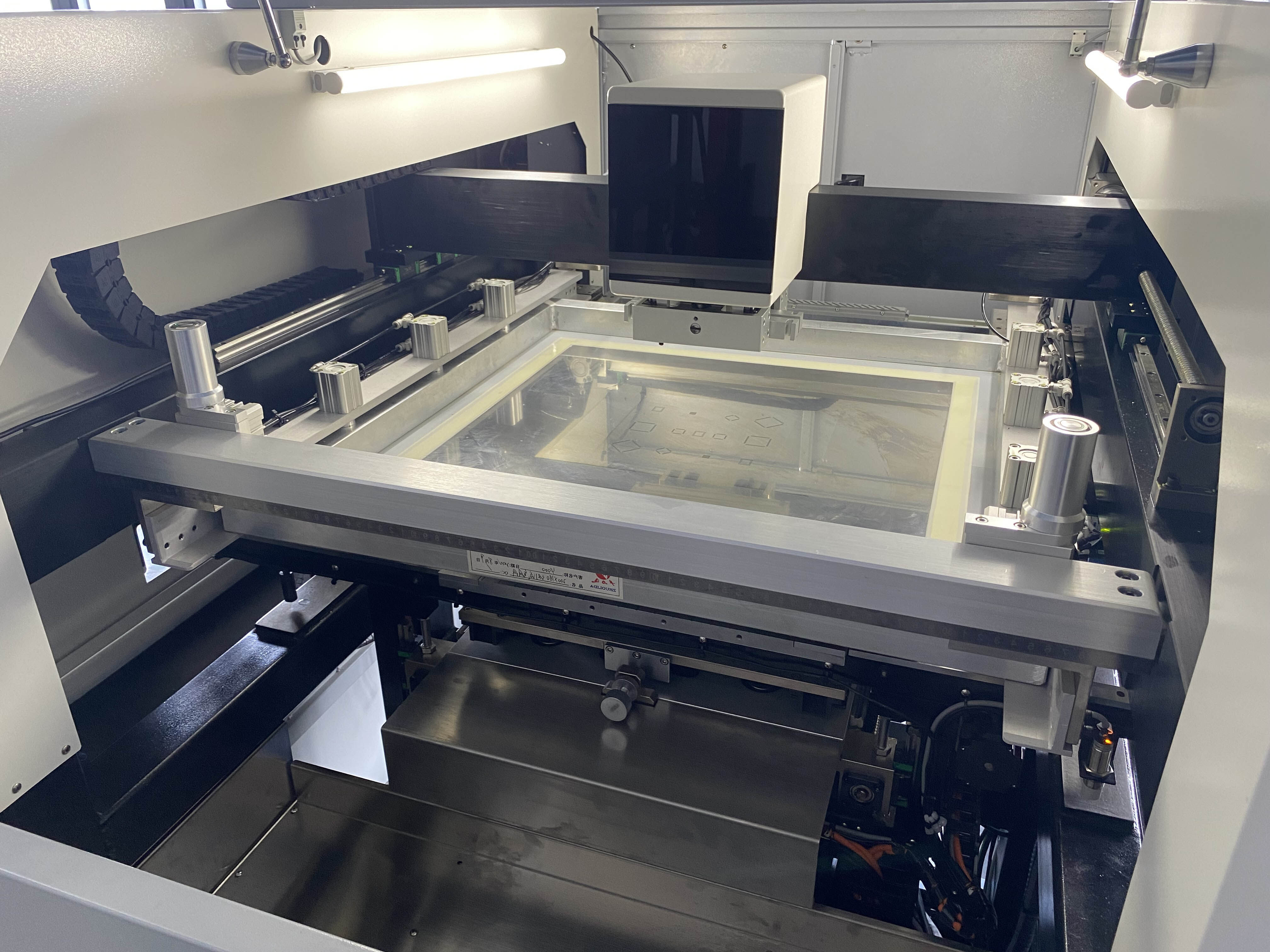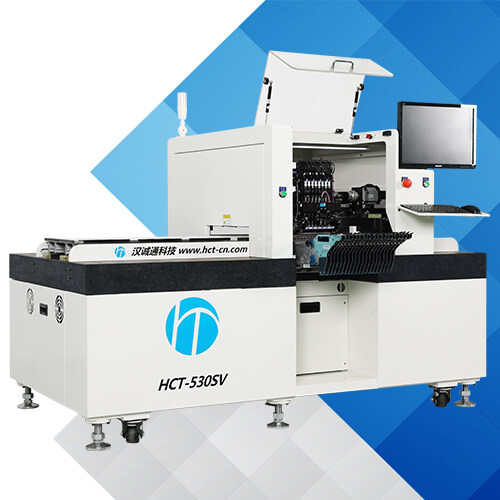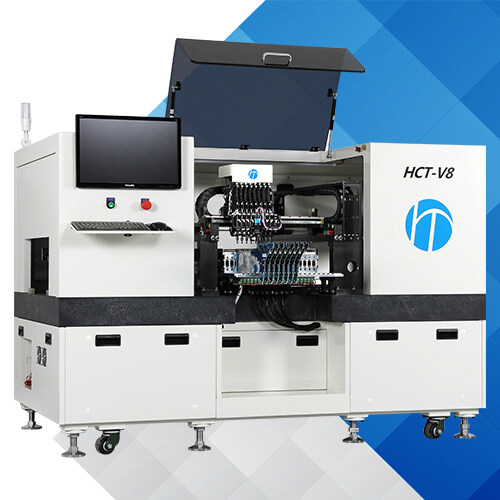E-Mail-Formatfehler
emailCannotEmpty
emailDoesExist
pwdLetterLimtTip
inconsistentPwd
pwdLetterLimtTip
inconsistentPwd


China's SMT Placement Machine Market Size and Industry Development Trend
This report provides an analysis of the Surface Mount Technology (SMT) placement machine market in China, focusing on its size and the prevailing industry development trends. SMT placement machines play a crucial role in the electronics manufacturing industry, aiding in the efficient and precise placement of surface-mount components on printed circuit boards. The report examines the factors driving market growth, identifies key players, and discusses emerging trends shaping the industry's future.
Introduction The Surface Mount Technology (SMT) placement machine market in China has witnessed significant growth in recent years, propelled by the country's expanding electronics manufacturing sector. As the demand for smaller and more complex electronic devices rises, the need for high-speed, accurate, and reliable SMT placement machines has become increasingly critical. This report aims to analyze the current market size, identify growth drivers, and outline the industry's development trends.
Market Size Analysis The report presents a comprehensive analysis of the SMT placement machine market size in China. It includes historical data and forecasts for the past five years, showcasing the market's growth trajectory. Furthermore, it examines the market segmentation based on machine type, application, and end-user industries, providing insights into specific growth areas.

Growth Drivers The report identifies key factors driving the expansion of the SMT placement machine market in China. These factors may include:
a) Increased demand for consumer electronics: The booming consumer electronics industry has fueled the demand for advanced SMT placement machines to achieve high-speed and high-precision manufacturing.
b) Technological advancements: Continuous improvements in SMT placement machine technology have resulted in faster production speeds, greater accuracy, and enhanced reliability.
c) Government support: Favorable government policies and incentives to promote domestic manufacturing have encouraged investments in advanced production equipment like SMT placement machines.
d) Export-oriented manufacturing: China's role as a manufacturing hub for global electronics companies has led to higher demand for efficient SMT placement machines to meet export requirements.
Key Players The report highlights major companies operating in the Chinese SMT placement machine market. It discusses their market share, product offerings, technological innovations, and strategies for sustained growth. Key players may include both domestic manufacturers and international companies with a strong presence in China.

a) Miniaturization and component density: As electronic devices become smaller and more complex, SMT placement machines will need to handle increasingly tiny components with high accuracy.
b) Industry 4.0 integration: Smart factories and the integration of Industry 4.0 concepts will drive the demand for SMT placement machines with enhanced connectivity and data-driven insights for improved productivity.
c) Artificial Intelligence (AI) and machine learning: The adoption of AI and machine learning algorithms in SMT placement machines will optimize component placement, reduce defects, and enhance overall manufacturing efficiency.
d) Environmental sustainability: Growing environmental concerns will encourage the development of eco-friendly SMT placement machines with reduced energy consumption and waste generation.

a) Intense Competition: The market is highly competitive, with numerous players vying for market share. Companies need to differentiate their products through technological innovations and superior customer support.
b) Cost Pressures: Price sensitivity in the electronics manufacturing industry puts pressure on SMT placement machine manufacturers to offer cost-effective solutions without compromising on quality.
c) Intellectual Property Concerns: The industry's rapid development has led to concerns about intellectual property rights, and protecting proprietary technologies becomes paramount for manufacturers.
d) Technological Obsolescence: With technology advancing rapidly, SMT placement machines risk becoming outdated quickly. Companies must invest in research and development to stay at the forefront of technological advancements.

Opportunities:
a) Growing Demand for Automotive Electronics: The expanding automotive electronics industry in China presents an excellent opportunity for SMT placement machine manufacturers, as modern vehicles incorporate an increasing number of electronic components.
b) Rise of 5G and IoT: The deployment of 5G networks and the proliferation of the Internet of Things (IoT) devices will drive demand for SMT placement machines capable of handling high-frequency and miniature components.
c) Supply Chain Resilience: The global push for supply chain resilience, exemplified by the disruptions caused during the COVID-19 pandemic, will encourage companies to establish localized manufacturing capabilities, thus boosting demand for SMT placement machines.
d) Sustainable Manufacturing: Environmentally conscious consumers and regulations promote sustainable manufacturing practices, leading to an increased demand for eco-friendly SMT placement machines that reduce environmental impact.

a) Focus on R&D: Investing in research and development to create innovative products with advanced features and improved efficiency will enable companies to gain a competitive edge.
b) Strengthen Intellectual Property Protection: Ensuring robust intellectual property protection measures will safeguard proprietary technologies and prevent unauthorized use.
c) Expand Customer Support Services: Providing comprehensive customer support services, including training, maintenance, and troubleshooting assistance, will enhance customer satisfaction and loyalty.
d) Embrace Sustainability: Incorporating sustainable manufacturing practices into product design and production processes will align with market trends and attract environmentally conscious customers.
e) Collaborate with Industry Partners: Collaborating with other companies in the electronics manufacturing ecosystem, such as component suppliers and assembly service providers, can foster synergies and unlock new opportunities.

a) Continued Technological Advancements: The relentless pursuit of technological innovation will lead to the development of faster, more accurate, and smarter SMT placement machines. Advancements in machine vision, AI, and robotics will revolutionize the manufacturing process, contributing to higher productivity and reduced defects.
b) Shift Towards Smart Manufacturing: The adoption of Industry 4.0 principles and smart manufacturing concepts will be increasingly prevalent in China's electronics industry. SMT placement machines will become an integral part of interconnected and data-driven manufacturing ecosystems, optimizing production efficiency and flexibility.
c) Cross-Industry Collaboration: SMT placement machine manufacturers are likely to engage in cross-industry collaborations with companies in sectors like automotive, telecommunications, and healthcare. These partnerships will facilitate the development of specialized machines tailored to specific application requirements.
d) Export Opportunities: China's role as a global electronics manufacturing hub will continue to create export opportunities for SMT placement machine manufacturers. As international demand for electronics products remains robust, Chinese manufacturers can capitalize on this trend by providing state-of-the-art placement machines to meet global production needs.
e) Increased Focus on Training and Talent Development: The complexity of SMT placement machine operations necessitates a skilled workforce. Manufacturers and industry stakeholders will invest in training and talent development programs to ensure a skilled workforce capable of maximizing the potential of advanced SMT placement machines.

a) Geopolitical Landscape: Political tensions and trade disputes may impact the electronics manufacturing industry, affecting the demand for SMT placement machines. Companies must navigate geopolitical uncertainties to mitigate potential disruptions.
b) Regulatory Changes: Evolving regulations on trade, environmental standards, and intellectual property protection may impact the industry's operations and investment decisions.
c) Economic Conditions: Economic fluctuations and global market dynamics could influence the demand for electronics products and, consequently, SMT placement machines.
d) Pandemic Preparedness: The lessons learned from the COVID-19 pandemic may lead to increased emphasis on supply chain resilience and localized manufacturing capabilities, shaping the industry's future landscape.
To thrive in this competitive landscape, SMT placement machine manufacturers should continuously invest in research and development, prioritize customer support and service excellence, and embrace sustainable and smart manufacturing practices. Collaborative efforts and partnerships across industries will further enhance the industry's growth prospects and establish a strong foundation for the future.
Overall, the Chinese SMT placement machine market's trajectory is promising, and companies that strategize wisely and adapt to changing market dynamics are likely to emerge as leaders in this vital sector of the electronics manufacturing industry.

